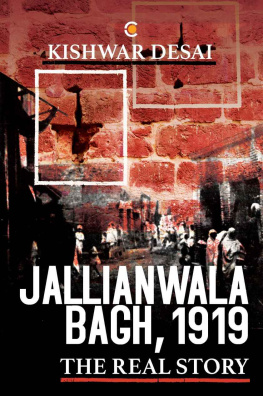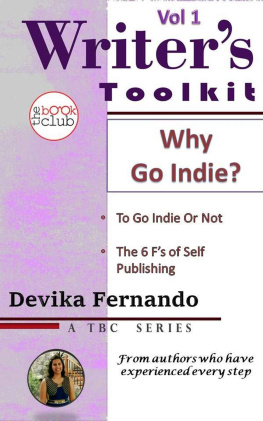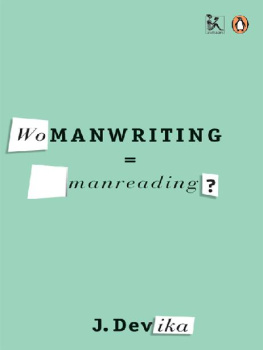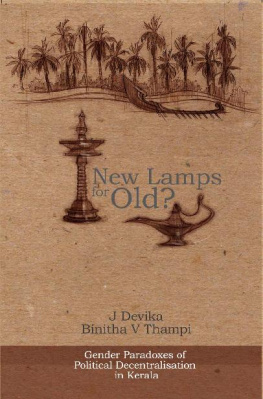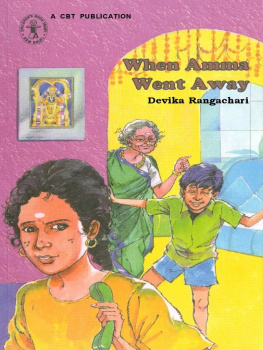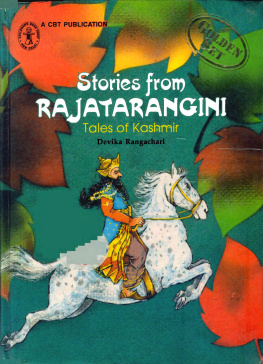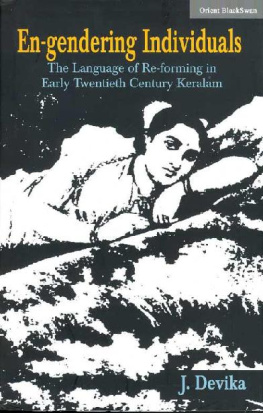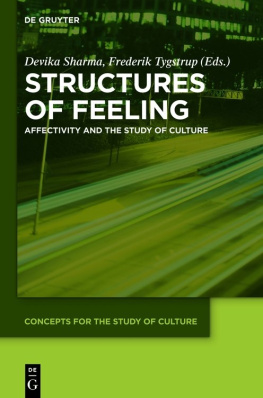Table of Contents


For Mallika,
brave, brilliant, beautiful

Devika Rani (19081994)
CONTENTS
This book has its origin in a fortuitous incident. I was at the National Film Archives of India (NFAI) around fifteen years ago for some research, and preoccupied with my thoughts, when I stumbled and almost fell over some film reels lying haphazardly on the floor. They turned out to be films produced by Himansu Rai, some of which featured Devika Rani. Curious, I requested to be allowed to watch the films, which included some silent films.
I was stunned at the high visual quality and the confidence with which the films were made way back in the 1920s and 1930s, and with Devikas acting. It has always surprised me that we do not talk more about the globalisation of early Indian cinema. Why do we not celebrate the fact that Himansus films were made with an international crew, and that his early, silent films were shown in Europe and America, something contemporary filmmakers crave to do but rarely achieve? Nor do we remember Devikas first film, which had its debut in London, where every critic raved about her. I was intrigued enough to want to write about both of them as well as Bombay Talkies, the studio they set up. With the generous help of the staff at NFAI, I gathered all the material I could find there. And so began the journey which took me all over the world, not just India, which is partly why this book took so long to put together.
Writing the book was a process of discovery, and sometimes very challenging. I met the Dietze family, who said that they were the grandchildren of Himansu, from Mary Hainlin. (I have written about Himansu and Marys relationship in the book, but not about the Dietze family, as they went public with their claim after Devika had died. The timeline for my book ends with her death.) We had many interesting and friendly meetings in India and Australia. But then, fate or karma intervenedand I found, on my own (guided, no doubt, by Devikas determination) the real core of the book: Devikas personal and professional letters and papers, containing exciting new information that had not been seen for 80 years. Despite all the hurdles, I had miraculously discovered authentic source material, much of it in her handwriting, relating to all aspects of her life. It was the luckiest break ever. After all those years of trying to find credible material, I had struck gold.
This book draws mainly on that primary source material, piecing it together to form the main narrative. It has been a slow and excruciating process, as only extremely brief online biographies, full of inaccuracies, were available about both Devika and Himansu. Even photographic exhibitions centred on her had gaping holesor incorrect statements. There was no ready record or source that I could use to form the structure. The narrative had to be created from scratch, from the thousands of papers and letters, personal and official, that I had collected over the years.
Had it not been for the COVID induced lockdown, I could not have had the uninterrupted time to be able to spread the papers all over the house, to read and put them into a proper context and sequence. Though I had started writing the book nearly a decade earlier, the papers required an intense and careful forensic scrutiny, which previously I could only manage in short bursts. All the documents, more than 4,000 of them, running into over 8,000 pages, had to be examined over and over again. These included Devikas letters, Himansus letters, and other correspondence, as well as detailed records of board meetings. There was correspondence between Himansu and Sir Chimanlal Setalvad, the resignation letters of Ashok Kumar and others at Bombay Talkies, letters from media persons such as Baburao Patel, the acerbic editor of Filmindia, and the piece de resistancethe letters introducing Dilip Kumar (then Yusuf Khan) and Raj Kapoor (then Ranbir Raj Kapoor) to Devika. There were also details of the numerous court cases, intrigues and financial debacles faced by Devika and Himansu. All these became my main source of information, as also the letters written by Svetoslavthough those will probably become another book.
Apart from all this, there were the interviews I had conducted with the families and friends of the main protagonists and a large number of film reviews, media articles and films. To put the narrative in context, I referred to books on the period, which are listed in a separate bibliography.
But the most important focus of this book remained Devikas letters, from which I learnt about her very successful but painful life and the abuse she silently suffered for so long. From these letters emerges the story of a young woman surviving in a deeply patriarchal industry mainly through her brilliance and hard work. She considered herself a professional working woman, but an intensely private one at the same timeand her life and experiences are documented here for the very first time. I hope I have been able to capture some part of her gutsy and determined fight against those who wanted to destroy her, her career and her legacy built over the two decades that she worked in cinema.
I do not go into the details of her life after she married Svetoslav, because by then she felt she had won her battle, and had moved on to a different life. Nor does this book cover the story of the claimants to her property and legacy, who appeared on the scene after her death. Had she been alive, as with everything else, I have no doubt that the Bengal tigress would have fought them and won.
I have used extracts from the letters and documents, verbatim as far as possible. Devikas personal letters have been very lightly edited, as she wrote very long epistles, with a non-stop flow of connected ideas and experiences. The letters are not reproduced in the exact sequence in which they were written. Most of them (especially those written by Devika) are from the 1940s and speak of her family and early life, her life with Himansu and, later, her struggle at Bombay Talkies.
While using extracts from letters in the early chapters, I have not mentioned the exact date on which they were written, as that may have been confusing for the reader. But in all the later chapters which deal with the 1940s, the dates are given, as the events and descriptions are in a contemporaneous time frame.
Another supportive source of material was the memoirs of Niranjan Pal, Such Is Life, especially for the early years when he and Himansu first met. I referred to the original book shared with me by his family, and not the later editions.
The conversations between characters in the book are obviously all from my imaginationthat is the only part where I have allowed myself a bit of literary licence. More importantly, I have tried to correct many of the myths and unfounded rumours which were repeated over and over again about Devika, Himansu, Niranjan, Sir Richard Temple, Ashok Kumar and many others who were involved in the setting up and running of Bombay Talkies. I am grateful for this opportunity to set the record straight.
I hope this book will be of help to others who care to study this very important phase in Indian cinema, with its passion, idealism and entrepreneurship, in the days before it became a business like any other.
I do also hope that I have managed to establish who Devika Rani really was. A rebellious and unusually talented and beautiful woman, a great actress and studio head who changed the course of Indian cinema in many ways, despite her intense personal suffering. A pioneer, then and now.


